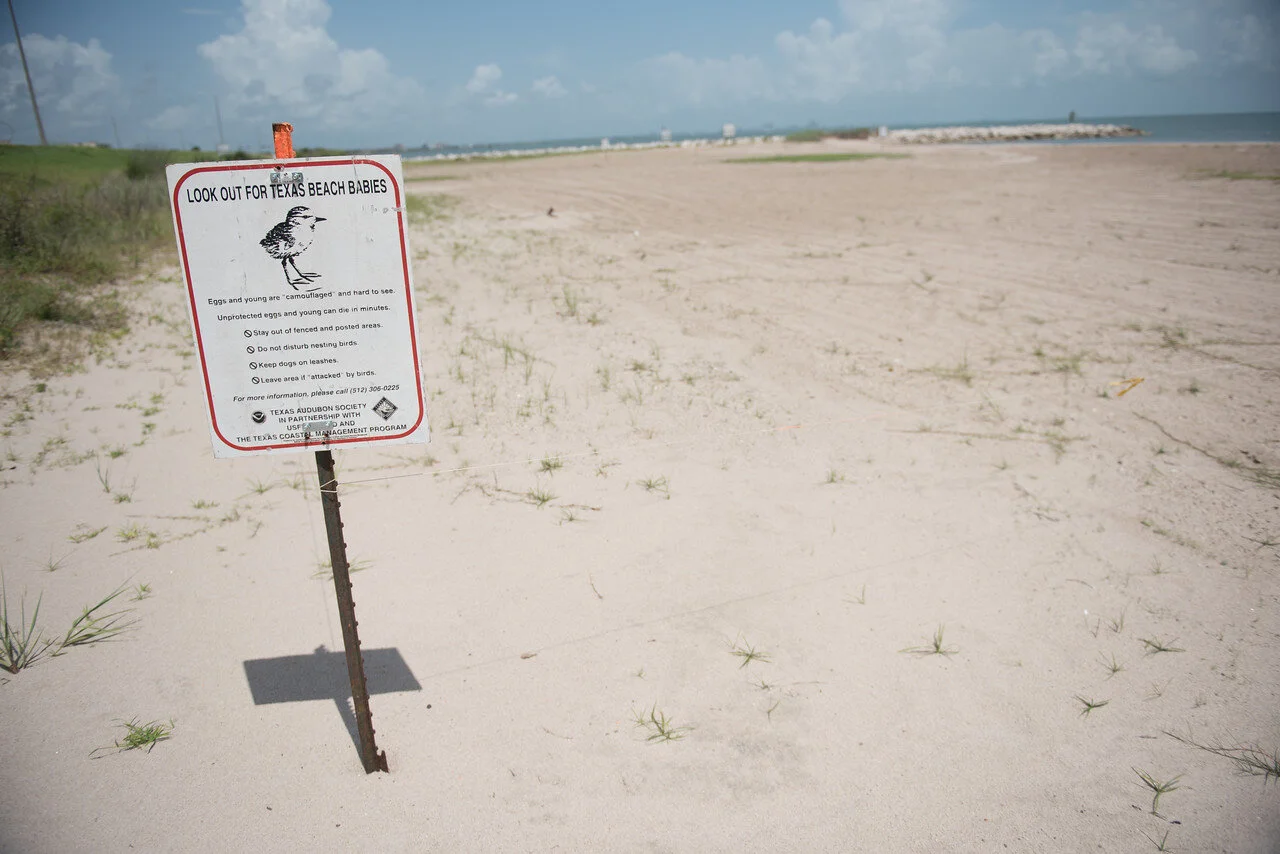Visitors to University Beach are Advised to Take Caution as Shorebirds Nesting Season Continues
By Luisa Buttler, Elizabeth Mock





CORPUS CHRISTI, Texas – While thousands of local residents have decided to forgo Corpus Christi beaches to minimize their interactions with others due to the COVID-19 health crisis, shorebirds need not take similar precautions, and are flocking to area beaches as they do each spring.
Early April marks the beginning of shorebird nesting season and birds have begun laying their eggs on University Beach, located across Ocean Drive from the Texas A&M University-Corpus Christi and along Corpus Christi Bay. The nesting season runs through early August, and scientists at the Island University’s Conrad Blucher Institute (CBI) are asking beach goers to be careful during this time while walking in the sand.
“It’s important to remember to avoid the nesting area.,” said Deidre D. Williams, Coastal Research Scientist with the CBI and project manager. “People coming too close could cause the birds to flee – abandoning fledglings and eggs to be unprotected from predators and the heat.”
Since April, TAMU-CC undergraduate student Ian Whitt has identified 20 nests on the beach belonging to federally protected shorebirds including killdeer, wilson’s plover, and least terns. Whitt completed a Bachelor of Science in Biology in 2015 and is working on a second degree in Environmental Science while conducting a research study on shorebird nesting habits.
Whitt visits the beach weekly to report on the status of the birds and their nests and collaborates with Coastal Bend Bays and Estuaries Program (CBBEP) avian experts and CBI scientists. He uses binoculars to observe the birds without disturbing them. Whit says that the COVID-19 stay-at-home order had a surprising effect on the number of visitors to University Beach.
“People have actually been visiting the beach more often than last year, most likely due to the amount of closed businesses,” he said. “My advice for everyone going to the beach is to remember that the nests are very tiny and difficult to see, so watch your step.”
While Whitt is monitoring the birds, staff from the CBBEP are fencing off nesting areas to help steer people clear of the shorebirds and their fragile eggs. When at the beach, visitors are asked to take extra care to keep away from these fenced areas, obey warning signs, and stay at least 150 feet away from the shorebirds. Additionally, not all nests are located within fenced areas, so beachgoers need to pay special attention to their surroundings as the nests, eggs and fledglings easily blend in with the sand and are easily missed.
According to the CBBEP website, there are several other ways visitors can avoid disturbing the shorebirds:
Keep dogs on a leash and away from areas where birds may be nesting (city leash law)
Properly dispose of trash to keep scavengers away
Never abandon fishing line or other gear, and remove it if you find it
Do not fly traditional kites or kites for kitesurfing near areas where birds may be nesting
When birds are aggravated, you are too close
Leave the area if shorebirds take flight or fly toward you
Those interested in birdwatching at University Beach during nesting season can observe from the bluff along Ocean Drive since it offers an ideal elevated view of the birds and is less invasive than walking on the beach. But if the birds take flight, you are asked to move further away so they will return to their nests.
